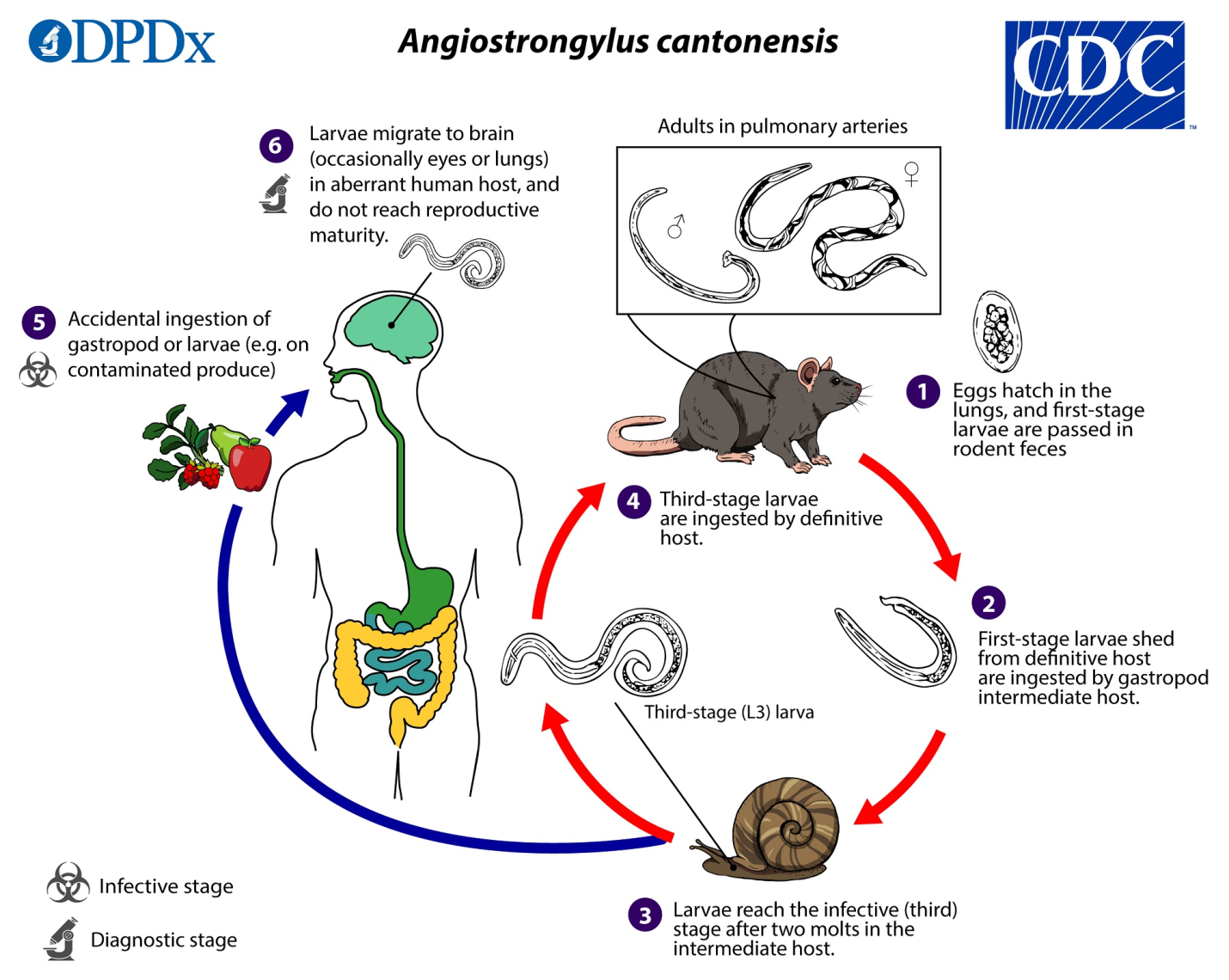Description

Copyright infringement not intended
Picture Courtesy: www.cdc.go
Context: The spread of the rat-borne parasitic worm Angiostrongylus cantonensis in southeastern America is a concerning issue, as it poses health risks to both humans and pets.
Key Highlights
- Parasitic Worm Threat: Angiostrongylus cantonensis, commonly known as the rat lungworm, is a microscopic parasitic worm primarily found in rats. It has been identified in several southeastern US states.
- Health Risks: This parasitic worm can cause serious health issues in humans. When accidentally ingested, it can migrate to the brain or spinal cord, leading to inflammation and a range of symptoms such as nausea, vomiting, neck stiffness, headaches, and even coma or death in severe cases.
- Infections in Wildlife: The rat lungworm can also infect pets, birds, and other wild animals, leading to potentially fatal infections in these creatures.
- Spread and Transmission: The worm is transmitted through rat feces and can infect humans and other animals through contaminated produce or food items. Basic precautions like thorough washing of vegetables and fruits, avoiding the consumption of raw or undercooked snails, slugs, crabs, freshwater shrimp, frog legs, and using gloves when handling snails or slugs can help reduce the risk of infection.
- Geographic Spread: The parasite is traditionally found in Southeast Asia and the Pacific Islands, including Hawaii. Its presence in the southeastern US suggests a potential expansion of its geographic range.
- Preventive Measures: To protect against infection, people are advised to wash vegetables thoroughly, avoid consuming certain high-risk foods, and practice good hygiene by washing hands regularly.
.jpg)
Conclusion
- While the number of confirmed cases is currently low, the study underscores the need for awareness and preventive measures to mitigate the threat posed by the rat lungworm in the southeastern US.
|
PRACTICE QUESTION
Q. The term “Angiostrongylus cantonensis” is frequently seen in the news, it is related to:
A) A type of rat poison
B) A Parasitic worm
C) A bacterial infection
D) A fungal disease
Correct Answer: B
Angiostrongylus cantonensis is a parasitic worm primarily found in rats. It is commonly known as the rat lungworm.
|
















